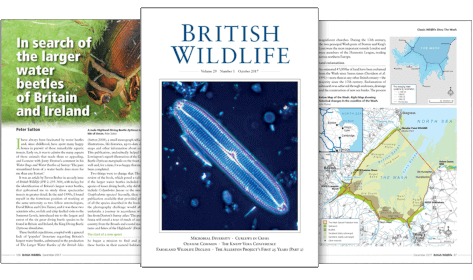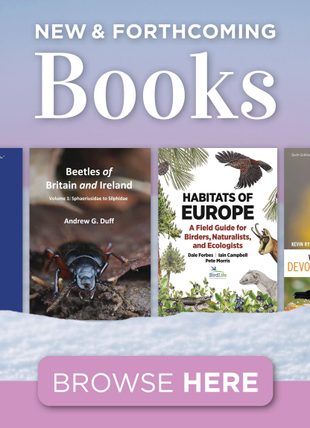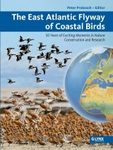About this book
NHBS acknowledges that the author's views put forward in this book run counter to the views of many conservationists and NHBS itself, but we strongly believe that well-argued and factual contributions to the debate should not be silenced and are more important than the potential controversy they raise.
From the publisher:
"The erosion of biodiversity is currently highly publicised. Certain movements accuse humans of destroying nature and being responsible for a sixth mass extinction. In this book, Christian Lévêque, Honorary President of the French Academy of Agriculture and a specialist in the ecology of continental aquatic environments, contends that this anxiety-provoking message is sometimes based on misconceptions, false or partisan ideas, and media relays that favour and amplify hype over fact. While the situation of certain populations is certainly worrying, others are expanding. Rather than holding a globalising discourse, it is necessary to recontextualise and relativise the debate to better define the necessary actions.
Biodiversity Erosion analyses numerous scientific publications, as well as discussions, emphasising the multiple biases present in the way information is presented. This book questions the relevance of the notion of species and the desire to compile an inventory of all living things. It argues for a less Manichean approach to our relationship with nature."
Contents
Introduction xi
Chapter 1 The Gradual Decline of Biodiversity: What Do We Mean? 1
1.1 The context of the debate 2
1.2 "Biodiversity"? A vague concept 3
1.3 The origins of a concept: creationist thinking 4
1.4 Decline: clarifying the meaning of the words 6
1.5 Are the indicators reliable? 8
1.6 Protecting what? 10
1.7 The evolution of the concept of decline: from a structural to a functional approach 11
1.8 Communication or misinformation? 13
1.9 At the roots of the sixth extinction 14
Chapter 2 The Promethean Dream: Taking Stock of Biodiversity 17
2.1 The notion of species is misleading! 17
2.2 Hidden biodiversity: cryptic or twin species 20
2.3 Species at the service of genes? 21
2.4 Species inventory: what do we know? 22
2.5 The geographical distribution of biological diversity 23
2.6 In summary 25
Chapter 3 What Can We Learn from the Great Extinctions of the Past? 27
3.1 A hundred times over, put your work back together 27
3.2 The great mass extinctions 28
3.3 The tree that hides the forest 31
3.4 Evolutionary consequences of extinctions 33
3.5 What is known about the post-extinction processes of the past? 35
3.6 In summary 35
Chapter 4 Biodiversity Decline: "The Worst Is Not Certain" 37
4.1 When scientists cross the yellow line! 37
4.2 The risk of extinction 40
4.2.1 Endemic species 40
4.2.2 Specialist species 42
4.2.3 Ubiquitous or opportunistic species 42
4.3 Vulnerability of species to risks 42
4.4 Species extinctions in the plant world 44
4.5 What do we know about species extinctions in animals? 46
4.6 Species extinctions in France 47
4.7 The false trails of globalization: contextualizing erosion! 51
4.8 In summary 53
Chapter 5 Let's Talk about the Renewal Rate of Biological Diversity 55
5.1 Extinction debt and speciation credit 55
5.2 Speciation processes 57
5.3 The speed of appearance of new species 58
5.4 Is speciation more important in tropical environments? 62
5.5 Evolution and the role of chance 63
5.6 Is habitat fragmentation a threat to biodiversity? 64
5.7 In summary 66
Chapter 6 Controversies Surrounding the Extinction Rate 67
6.1 The laborious calculation of the extinction rate 68
6.2 The area/species relationship: a highly criticized prospective tool! 71
6.3 Text commentary on the extinction rate of species according to the Sagascience website 74
6.4 A debate confused by ideological concerns 76
6.5 In summary 78
Chapter 7 The Hidden Face of Methods for Assessing Biodiversity Decline 81
7.1 Who can be trusted to analyze the data? 82
7.2 Questions about the "species" metric 83
7.3 Amalgamation and false leads 84
7.4 Contingency and the problem of changes in scale: global versus local 85
7.5 Losers, but also winners? 86
7.6 Manipulating figures: communication or hijacking? 88
7.7 The health sector taken hostage 89
Chapter 8 Biodiversity and the Functioning of Ecosystems: A Multitude of Preconceived Ideas 91
8.1 The black box of ecological functioning 91
8.2 The balance of nature is fiction 92
8.3 Disruption does not mean disaster 94
8.4 Are all species needed? 95
8.5 Deterministic or stochastic ecological systems? 96
8.6 The more species there are, the more resilient the ecological system is 97
8.7 The threshold effect or the fall of a paradigm! 98
8.8 Species substitutions and the functioning of ecological systems 99
8.9 In summary 100
Chapter 9 Species Introductions: For Better or For Worse 101
9.1 The delicate issue of indigenousness 102
9.2 Species introductions: one of the main causes of biodiversity loss? 104
9.3 Species introductions and ecosystem functioning 106
9.4 Why are our trees sick? 107
9.5 Can introductions be controlled? 109
9.5.1 The case of climate migrants 110
9.5.2 Stowaways 110
9.5.3 Voluntary or accidental introductions 111
9.5.4 Lack of courtesy 112
9.6 Being pragmatic? 112
9.7 Strongly divergent opinions among scientists 114
9.8 In summary 115
Chapter 10 Global Warming: A Catastrophe for Biodiversity? 117
10.1 Climate uncertainties 119
10.2 The lessons of retrospective ecology 121
10.3 Likely consequences of reduced precipitation 123
10.4 Likely impacts of temperature increase on biodiversity 123
10.5 Rising sea levels 125
10.6 Undergoing or going along with change? 126
10.7 In summary 127
Chapter 11 Is Planning Destroying Biodiversity? 129
11.1 European nature: a reconstructed nature 130
11.2 "Degraded" ecological systems... really? 131
11.3 When you transform, you lose and you win... 132
11.4 Paradox: destroying biodiversity under the pretext of naturalness 134
11.5 A brief saga of French forests 136
11.6 In summary 139
Chapter 12 The Decline of Insects 141
12.1 The decline of insect populations creates the event 141
12.2 Is the apocalypse coming? 145
12.3 The difficulty of identifying the causes 146
12.4 Speculation on possible causes 147
12.4.1 Light pollution 148
12.4.2 Pesticides 148
12.4.3 Diseases 149
12.4.4 Changes in agricultural practices 150
12.5 What is the impact on agriculture? 150
12.6 The case of bees 151
12.7 The case of butterflies 153
12.8 Some remarks on our relationship with insects 156
12.9 In summary 157
Chapter 13 The Decline of Birds 159
13.1 The red list of threatened species 159
13.2 The decline of bird populations... as early as the 19th century 160
13.3 Monitoring of the STOC program 163
13.4 Focus on the farmland bird guild 164
13.4.1 Different trends for different species 164
13.4.2 Disparities between regions are a cause for concern 166
13.4.3 A general decline across Europe 169
13.5 The habitat trail 173
13.6 Many other causes 175
13.7 The role of reserves 177
13.8 On what basis can we talk about decline? 179
13.9 Let nature take its course? 179
13.10 In summary 182
Chapter 14 Reasons to be Positive 183
14.1 Highly resilient ecological systems 183
14.1.1 Oil spills 184
14.1.2 Fires 184
14.1.3 How long does it take for a tropical forest to regenerate? 186
14.1.4 Pollution of continental aquatic systems 186
14.2 Recovering populations! 187
14.3 Nature conquers the city 191
14.3.1 Reducing pollution 193
14.3.2 "Rewilding" the city? 193
14.4 Rehabilitation of "degraded" systems 194
14.4.1 Water quarries 194
14.4.2 Slag heaps 195
14.5 What is the future for anthropized nature, left to its own devices? 195
14.6 Let's talk about the wolf 196
14.7 In summary 198
Chapter 15 From Facts to Extrapolations 199
15.1 Many inconsistencies and post-truths 201
15.2 Going beyond ecocentrism: what kinds of nature do we want? 203
15.3 Protected areas and the return of colonialism? 205
15.4 Nature, an inexhaustible source of problems 207
15.5 Single-mindedness and anxiety-provoking communication 208
15.6 The business of biodiversity 209
References 213
Index 235
Customer Reviews
Biography
Christian Lévêque is Honorary Director of Research at the Institut de recherche pour le développement, France, Honorary President of the French Academy of Agriculture and a specialist in the ecology of continental aquatic environments. He is the author of numerous works on ecology and biodiversity.


































